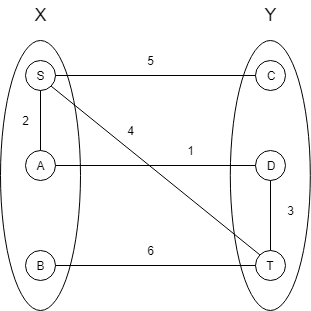Option: (A) the minimum weighted spanning tree of G
Consider the following graph-

Here, (A, D) is the edge e with weight 1.
The shortest path S to T is (S, T) which does not contain e. Therefore, option (B) is false.
Also, we can see that e is not part of every path from S to T. Therefore, option (C) is false.
Similarly, we show that there can be certain graphs where e is part of the shortest path from S to T.
However, we can see that e is the edge with the minimum weight that connects the vertex set X to vertex set Y, therefore, it must always be present in the MST.
Therefore, the correct option is (A).